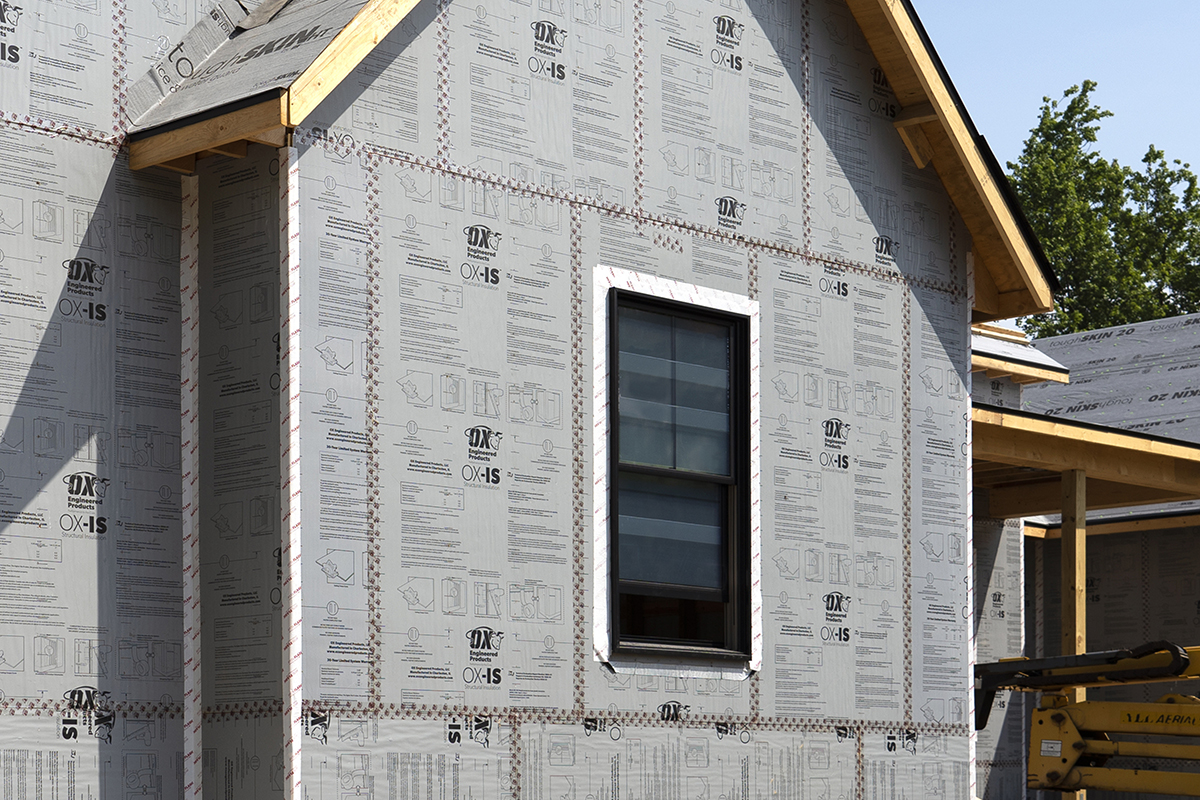CONTACT OX
TO LEARN MORE
Give us a call at 800-345-8881 or fill out the form below
and we’ll get back to you within two business days.

Temperatures are rising year around in the Unites States, with some of the warmest years on record in the past decade. Summer heatwaves are increasing in both frequency and intensity, with the hottest regions sustaining temperatures exceeding 100° F.
However, the United States offers a diversity of climate zones, and the building materials used on homes and buildings must not only withstand ordinary wear and tear but also perform consistently through every season. The development of “all-weather sheathings” that can handle temperature extremes without compromising structural integrity or energy efficiency are booming in popularity.
In addition, the 2021 International Energy Conservation Code (IECC) includes changes to improve energy efficiency in a wide variety of structures, and insulated sheathing helps to satisfy these new requirements. And contractors, installers, and homeowners are looking for high-performance, integrated solutions that meet the needs and requirements of any climate zones.
Maximizing Energy Efficiency: A 4-in-1 Solution
One way to enhance thermal efficiency across the entire building envelope is by incorporating continuous insulation (CI) in building designs. CI minimizes thermal bridging, a process where heat travels through conductive building materials such as metal or wood studs, leading to energy loss. By reducing or virtually eliminating these thermal bridges, continuous insulation helps to maintain consistent interior temperatures, resulting in a more comfortable indoor environment and less reliance on heating and cooling systems.
Some products take the savings even further. For example, OX-IS structural insulated sheathing is a 4-in-1 solution that combines structural sheathing, continuous insulation, an air barrier, and a water-resistant barrier in a single product. This comprehensive approach allows builders to streamline the construction process while achieving superior thermal performance. This saves on labor and the amount of separate building materials that construction managers need to purchase. From a performance perspective, the continuous insulation layer within the OX-IS material helps to create a tighter building envelope. This significantly reduces heating and cooling costs, often by an impressive 20% to 40%. The resulting energy savings for owners over the course of a building’s lifecycle are significant.
In addition to its insulating properties, OX-IS acts as an airtight barrier, reducing air infiltration more effectively than traditional OSB and house wraps. This means less energy is needed to maintain desired interior temperatures, further improving energy efficiency. With these combined benefits, OX-IS insulated sheathing is an ideal choice for builders looking to meet or exceed energy efficiency standards while delivering enhanced comfort and long-term durability for the structure for homeowners.
Zone Requirements: Addressing the Unique Needs of Every Climate Zone
Insulation codes, including those set by the IECC, determine minimum standards to help structures maintain consistent indoor temperatures and energy efficiency.
- Hot-Humid Zones (1-3): From hot, humid areas in southern Texas to hot, dry areas in the Southwest and mixed-humid areas in the Southeast, code requirements for insulation are set in place for buildings to resist humidity, reduce heat gain, and protect thermal efficiency. These climate zones place a heavy focus on vapor barriers within insulation to prevent excessive moisture build up.
- Mixed and Cold Zones (4-5): The pacific Northwest, Midwest, and much of the Great Lakes region require higher insulation levels to maintain temperatures during the colder months, which requires managing moisture and heat resistance.
- Very Cold to Subarctic (6-8): These climate zones cover parts of the northern Rockies and Great plains, northern parts of the U.S., and Alaska. These areas carry the highest insulation demands to aid in protection from the extreme cold, often needing specialized systems to minimize thermal bridging.
Using continuous insulation systems such as OX-IS helps to meet or exceed IECC requirements across all climate zones for insulation, particularly in the zones with stricter guidelines. IECC insulation requirements are tailored to the specific needs of each climate zone to ensure energy efficiency, moisture management, and thermal comfort. In hot-humid zones, insulation focuses on managing heat gain and preventing moisture intrusion, while mixed and cold zones prioritize retaining heat during colder months and controlling moisture. Very cold to subarctic zones face the most extreme conditions, necessitating high insulation levels and specialized systems to protect buildings from severe cold to minimize energy loss.
Weathering the Storm: All-Weather Resilience
In a time when extreme weather conditions are becoming the norm, selecting the right building materials is more critical than ever. All-weather sheathing offers a resilient and high-performance solution that meets the demands of diverse climate zones across the United States. By providing continuous insulation, superior airtightness, and moisture management in a singular product, builders and contractors can achieve IECC standards and create energy-efficient, comfortable spaces year-round. With its ability to reduce heating and cooling costs for the long term, all-weather sheathing proves to be a versatile, year-round performer that’s ready for any environment.
